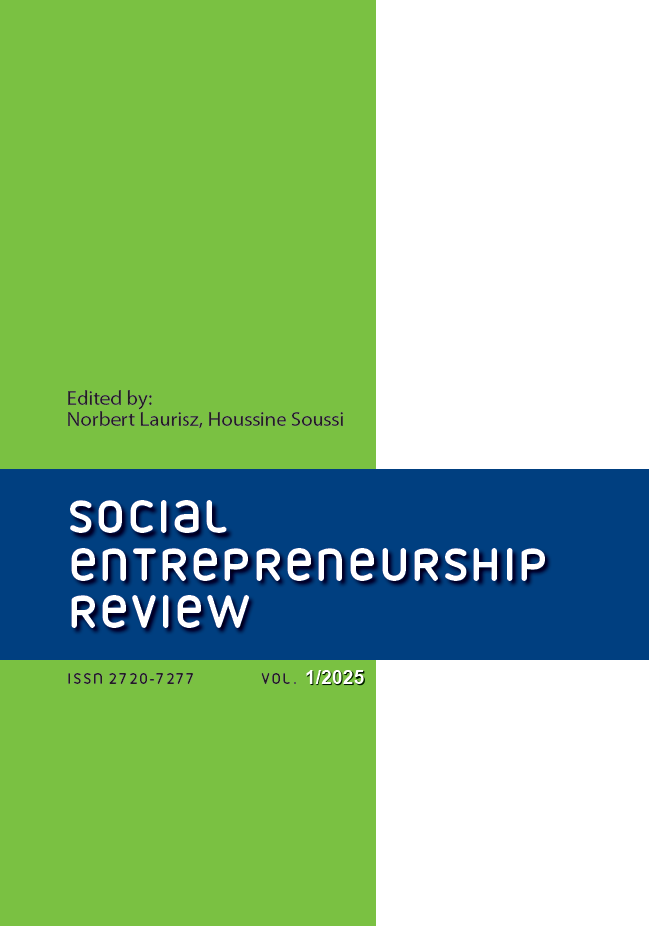Monetization of social effects
DOI:
https://doi.org/10.15678/ES.2018.2.04Keywords:
social impact, monetization, travel cost method, hedonic pricing method, conditional valuation method, benefit transfer methodAbstract
One of the key barriers to the development of the social economy sector in Poland is the lack of common knowledge and skills in the effective and systematic measurement of achievements. This is important because despite the growing public awareness of the benefits generated by this sector, there are still some reservations about the rationality of supporting social enterprises. The way to measurable and effective presentation of the effects of social activities is to monetise these effects, that is, to give them a monetary value. This article reviews literature related to the valuation of non-market goods developed in the area of ecology and indicates the potential for adaptation of this type of methods in the area of social economy. These conclusions can be used to conduct further empirical research as well as to build new methods and tools for social impact assessment.
Downloads
References
Alberini A., Cooper J. (2000). Applications of the contingent valuation method in developing countries. A survey. Roma: FAO Food and Agriculture Organization of the United Nations.
Arrow K.J., Solow R., Portney P., Learmer E., Radner R. (1993). „Report of the NOAA Panel on Contingent Valuation”, Federal Register, nr 58(10), s. 4602–4614.
Bartczak A., Buszko-Briggs M., Żylicz T. (2005). Wycena wartości lasów w Polsce. Maszynopis niepublikowany.
Bartczak A., Czajkowski M., Kopańska A., Markowska A., Żylicz T. (2011). Wartości nierynkowych korzyści z lasów. Metody wyceny oraz zastosowanie wyników w analizach ekonomicznych. Warszawa: POLFOREX, http://www.polforex.wne.uw.edu.pl/docs/przewodnik_v3_final.pdf (dostęp: 19.12.2018).
Bateman I. (1993). Evaluation of the environment: a survey of revealed preference techniques. Working Paper No. 93-06. London: Centre for Social and Economic Research on the Global Environment.
Bateman I., Willis K.G. (1999). Valuing Environmental Preferences: Theory and Practice of the Contingent Valuation Method in the US, EU and developing Countries. Oxford: Oxford University Press.
Bowen H.R. (1943). „The interpretation of voting in the allocation of economic resources”, Quarterly Journal of Economics, nr 58, s. 27–48.
Boyle K.J. (2004). „Contingent valuation in practice”, w: P. A. Champ, K. J. Boyle, T. C. Brown (red.), A primer on nonmarket valuation. Dordrecht: Kluwer Academic Publishers.
Brown G., Mendelsohn R. (1984). „The Hedonic Travel Cost Method”, The Review of Economics and Statistics, Vol. 66, No. 3, s. 427–433.
Carson R.T. (2011). Contingent Valuation. A Comprehensive Bibliography and History. Cheltenham: Edward Elgar Publishing Inc.
Ciriacy-Wantrup S.V. (1947). „Capital returns from soil-conservation practices”. Journal of Farm Economics, nr 29, s. 1181–1196.
Clawson M, Knetsch J. (1966). Economics of Outdoor Recreation. Baltimore: John Hopkins University Press.
Costanza R., d’Arge R., de Groot R., Farber S. (1997). „The value of the world’s ecosystem services and natural capital”, Nature, nr 387, s. 253–260.
Frączek M., Laurisz N. (2012). „Ekonomia społeczna a rynek pracy”, w: M. Frączek, S. Mazur, J. Hausner (red.), Wokół ekonomii społecznej (s. 157–176). Kraków: MSAP UEK.
Geodecki T. (2014). „Innowacje a wzrost gospodarczy”, w: T. Geodecki, Ł. Mamica (red.), Polityka innowacyjna. Warszawa: Polskie Wydawnictwo Ekonomiczne.
Głowacki J. (2015). „Wartość w ekonomii społecznej”, Ekonomia Społeczna, nr 2, s. 60–68.
Hanemann W.M. (1994). „Valuing the environment through contingent valuation”, The Journal of Economic Perspectives, nr 4, s. 19–43.
Hotelling H. (1949). An Economic Study of The Monetary Evaluation of Recreation In the National Parks. Washington: Letter.
Kolasa K. (2012). Optymalna alokacja zasobów w ochronie zdrowia. Warszawa: Wolters Kluwer.
Loomis J. (2001). „Contingent valuation methodology and the us institutional framework”, w: I. J. Bateman, K.G. Willis (red.), Valuing environmental preferences. New York: Oxford University Press.
Markowska A., Żylicz T. (1999). „Costing an international public good: The case of the Baltic Sea”, Ecological Economics, nr 30, s. 301–316.
Oczkowski E. (1994). „A Hedonic Price Function for Australian Premium Table Wine”, Australian Journal of Agricultural Economics, nr 38/1, s. 93–110.
Pacut A. (2015). „Rozwój przedsiębiorczości społecznej – istota i kierunki analizy”, Ekonomia Społeczna, nr 1, s. 7–20.
Randall A. (1994). „A Difficulty with the Travel Cost Method”, Land Economics, nr 70/1, s. 88–96.
Rosenthal D.H. (1987). „The Necessity for Substitute Prices in Recreation Demand Analyses”, American Journal of Agricultural Economics, nr 69, s. 828–837.
Schumpeter J.A. (1995). Kapitalizm, socjalizm, demokracja. Warszawa: Wydawnictwo Naukowe PWN.
Tomczyk E., Widłak M. (2010). „Konstrukcja i własności hedonicznego indeksu cen mieszkań dla Warszawy”, Bank i Kredyt, nr 41/1, s. 99–128.
Żylicz T. (2013). Wycena usług ekosystemów leśnych, referat przedstawiony na konferencji pt. „Lasy jako czynnik rozwoju cywilizacji: współczesna i przyszła wartość lasów”, 15 października.






